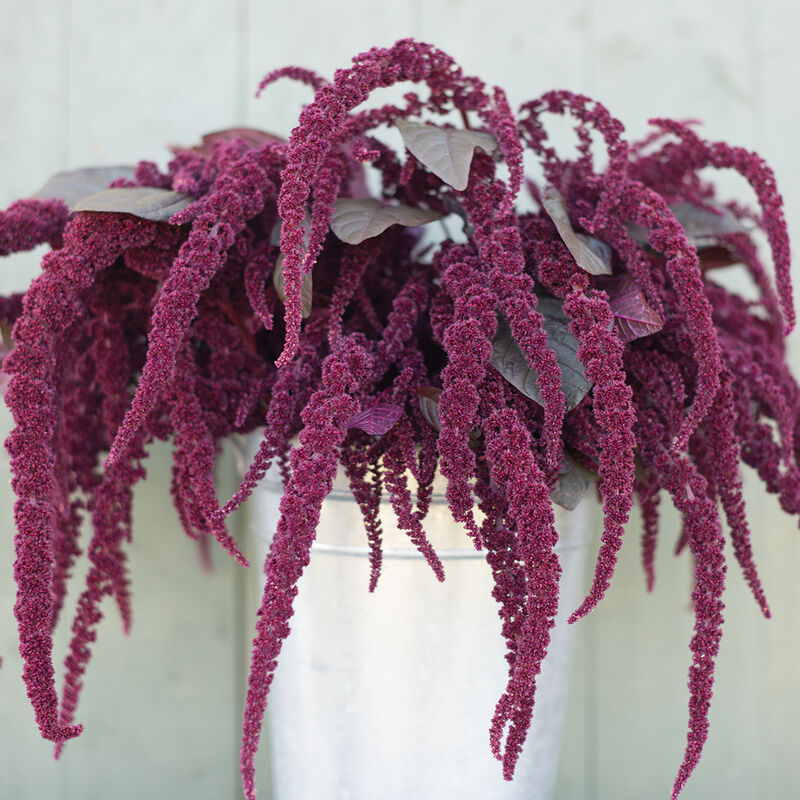Olive Seed Company
Amaranth 'Hopi Red Dye'
Amaranth 'Hopi Red Dye'
Couldn't load pickup availability
Hopi Red Dye (Amaranthus caudatus)
Hopi Red Dye amaranth offers a rich, earthy beauty with its deep burgundy blooms and gracefully arching flower heads. More compact than trailing types and smaller than upright varieties, the blooms measure about 1–2" wide and 12–24" long, making them a versatile choice for arrangements where texture and color are desired without overpowering the display. Their refined form blends seamlessly into mixed bouquets, adding depth and contrast to both fresh and dried designs. Plants thrive in full sun and well-drained soil, producing steady color from midsummer into fall.
Beyond its ornamental value, Hopi Red Dye carries a long tradition of use. The tender young leaves can be harvested as a nutrient-rich green, and the seeds are edible as well. Its namesake use as a natural dye comes from soaking or simmering the flower clusters, stems, and leaves to produce a rich red pigment, historically used in foods and textiles. Whether you’re growing it for the garden, the vase, or the dye pot, this amaranth offers both beauty and utility. For the straightest stems when drying, harvest at peak bloom and hang upside down in a warm, dry place.
DETAILS:
QTY: 200
TYPE: Annual
SITE: Full Sun
DEPTH: BARELY COVER
GERMINATION: 7 - 10 days at 21 - 24°C
HEIGHT: 24" - 30” Support may be necessary.
MATURITY: 65 - 75 Days
SPACING: 12 - 15”
PINCH: Yes
HOW TO GROW:
Transplanting (recommended): Start seeds indoors 4–6 weeks before your average last frost date. Barely cover the seeds with a fine layer of soil or vermiculite, as they require light to germinate. To avoid displacing them, bottom water or mist gently. Harden off seedlings by growing them at night temperatures of – before transplanting outdoors after all danger of frost has passed.
Direct Seeding (alternative): Sow seeds outdoors after your last frost date. Sow seeds thinly and barely cover. Once seedlings have developed their first true leaves, thin them to a final spacing of 12–15" apart.
Pinching and Support: Pinching the tops of young plants will encourage a bushier habit and more blooms. Taller varieties may require staking or other support to prevent them from flopping over.
Soil Preference and Watering: Amaranthus thrives in full sun and tolerates a wide range of soil conditions, but prefers well-drained soil. It is a heat-loving and drought-tolerant plant once established, but will perform best with consistent moisture.
Fertilizing: Fertilizing is not typically necessary unless your soil is very poor. Over-fertilizing, especially with nitrogen, can lead to excessive foliage growth and fewer flowers.
Harvesting: For bouquets, harvest amaranthus when the flowers are about three-quarters of the way open and the stems are firm. For drying, harvest when the flowers are fully developed and the seeds are set. Hang bunches of stems upside down in a dark, well-ventilated area until completely dry.
Shipping & Returns
Shipping & Returns

-
Free Shipping
Free Shipping on all orders in Canada over $125.00

